Since this year my projects Meditation Lab and Silence Suit are part of Hack the Body program initiated by the art-science lab Baltan. They want to combine different programs so they suggested that Hack the Body should work together with people from the Age of Wonderland program.
That meant I could work with Branly again. I met him last year and that was a very impressive experience. Branly works with people using ancient Maya spirituality.
At the same time I could try out the Sensiks cabin. With this cabin you can create multi-sensory experiences. This is very similar to what I want to do in my Hermitage 3.0 project. (This will be a space where I can optimise meditation by changing the environment and influencing the senses.)
I brought my Silence Suit which already has a lot of working sensors. We could use the suit to log biometric and environmental data and see how they are influenced by the actuators in the Sensiks cabin.
The main aim of the hackathon was to explore if ancient Maya culture and rituals can be transferred to a high tech environment. The team members were David, Branly, Masha, later to be joined by Michel.
Day 1: exploring
The first afternoon Branly explained the Tuj/Temazcal. It is used in a purifying rebirth ritual. It is a small dome-like structure that is heated by hot stones and steam. The experience resembles a sauna. The rebirth ritual is multi-sensory too: touch (temperature, rubbing with twigs and salt), smell: different herbs and resins, taste: hot drinks (herbal infusions, cacao, honey). Sound: beating of a drum, like heartbeat. Vision is excluded mostly. The Tuj is dark except for red hot glowing stones. We decided to take this as a starting point for building our experience.

The Tuj is located on a beach or in the woods. A quiet, relaxing space. The ritual isn’t limited to experience in the dome. Preparations start days before. The space around the dome is also part of the ritual. For example the structure has a low door so you have to get on all fours to enter. This immediately takes you back to your childhood.
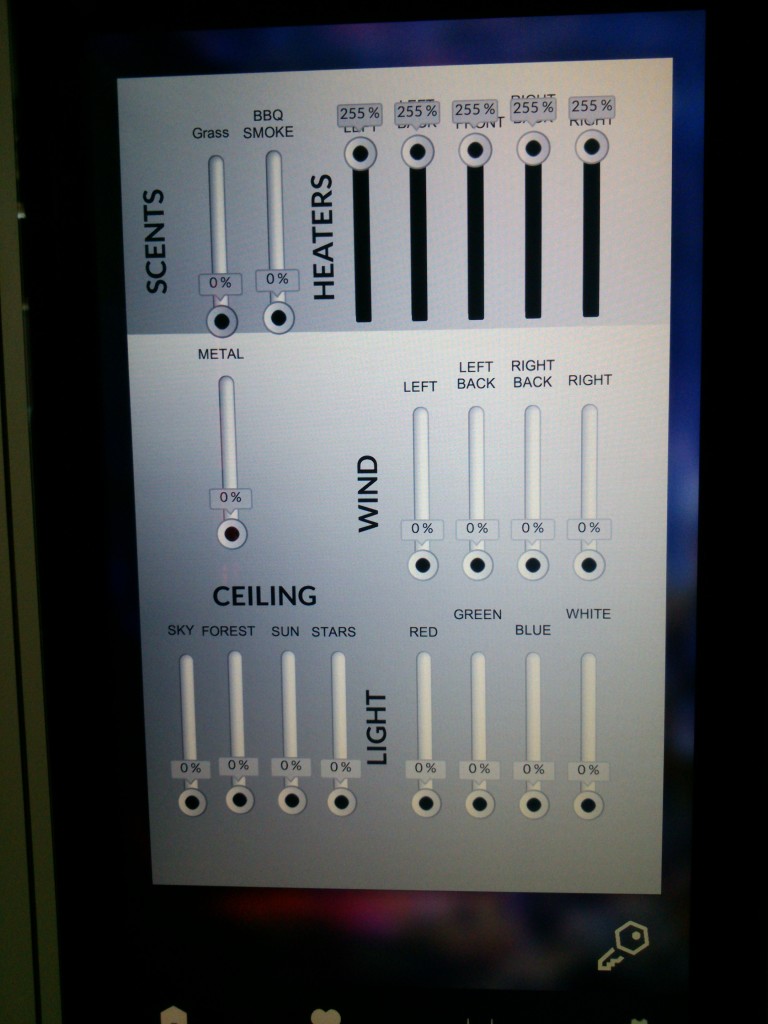
The Sensiks cabin has lots of different actuators: smell, airflow, light, sound, temperature and VR. Everybody had a test ride. We all felt the cabin was rather clinical. We wanted to connect it to the environment. Make it part of a bigger ritual like the Maya rebirth ritual.
Day 2: concept development
Next day we were joined by other Hack the Body participants and hackers. One of them was Michel with whom I collaborate on the Silence Suit.
The whole group had a very interesting discussion about what an experience actually is and where it is experienced. Is it meaningful to recreate an experience that can never match the real thing? The most interesting would be to create something that can’t be experienced in the real world. We wanted to work on changing our state of mind through bodily experiences.
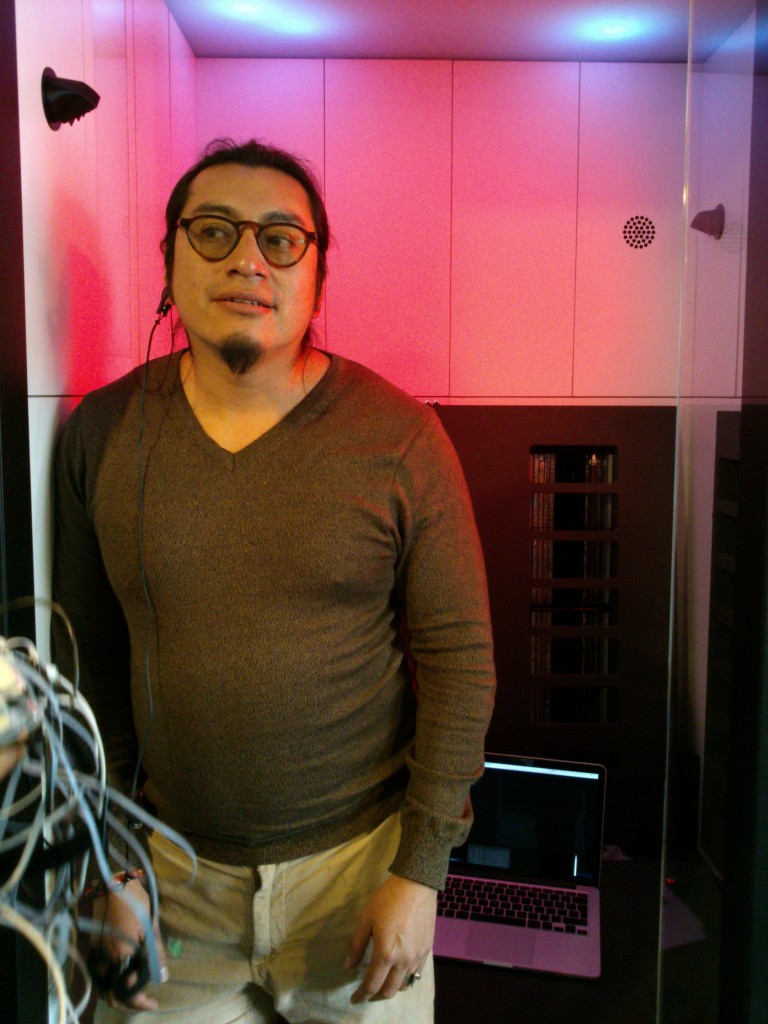
Day 3: design and experiments
The Maya team was joined by technology wizard Michel. We decided that we did not want to mimic the actual sensory experiences but try to induce a state of mind, another level of consciousness. We used these keywords as our guideline: womb, unknown, subconscious, abstract and random, rhythm. The next step was to translate these abstract concepts into an experience in the cabin. Actuators that we could use: smoke, heat, sound, red and blue lights.
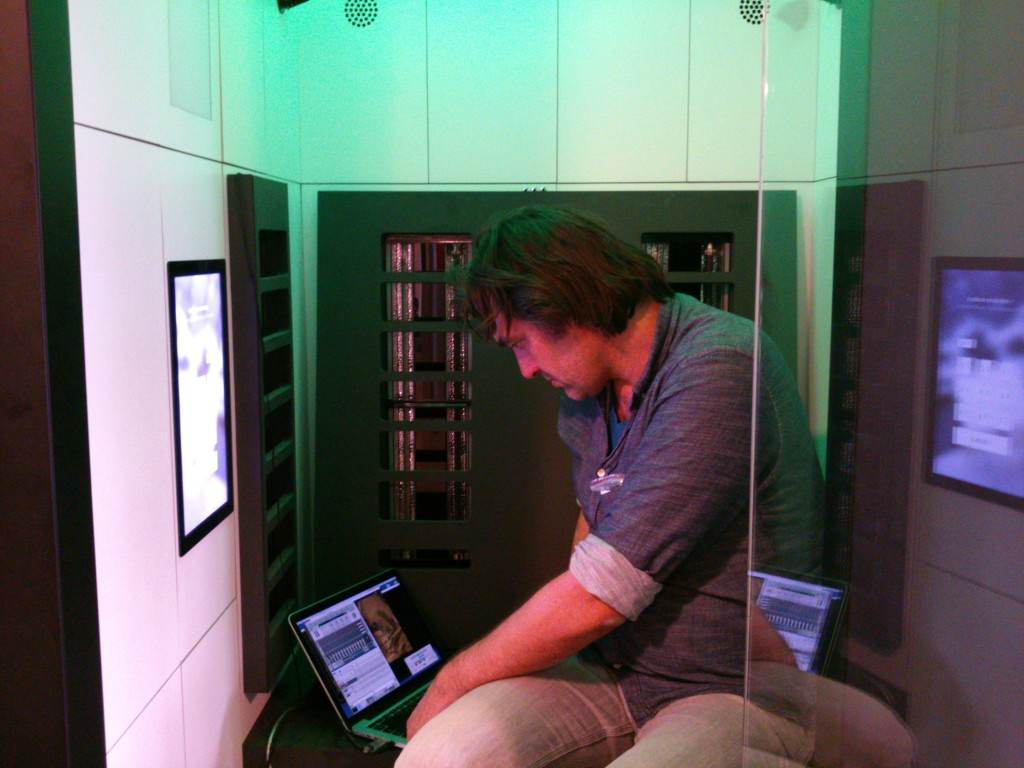
In the womb the developing child experiences the heartbeat and breathing of the mother. In the rebirth ritual they make use of a drum to simulate that heartbeat. We wanted to use our own heartbeat and breathing using life data from the Silence Suit. The Sensiks cabin would provide the feedback through sound and light and influence the user. We did little experiments to try out the effects of hearing your heartbeat and breathing, using smoke, scent, heating the cabin, using airflow, etc. It was promising.
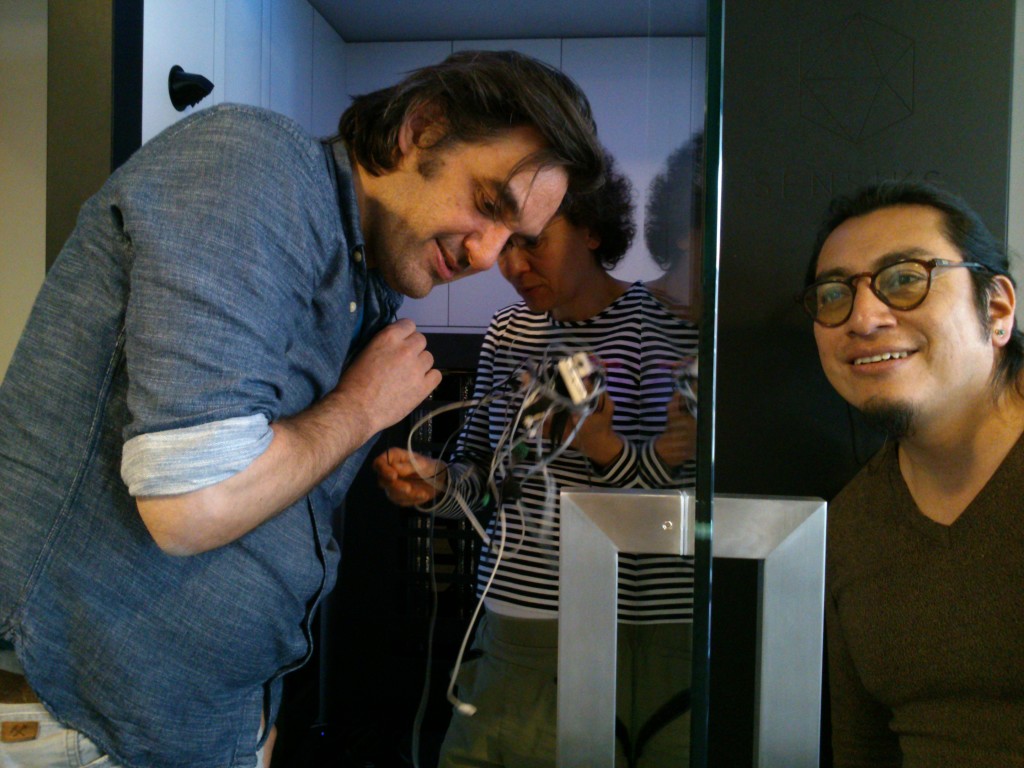
Day 4: building and presentation
We wrote a scenario of the ritual which started and ended outside of the cabin. Our aim was to slow heart-rate by manipulating the feedback. Just like the peaceful heart-beat of the mother will quiet the unborn child. This is also a way to connect to the heartbeat of the cosmos.
From this came the idea to limit the experience to 260 heart-beats (there are 260 days in a Maya year). By slowing your heart-rate you can make the experience last longer. Four stages of 65 beats would offer different experiences aimed at first going inward and then returning to the outside again.
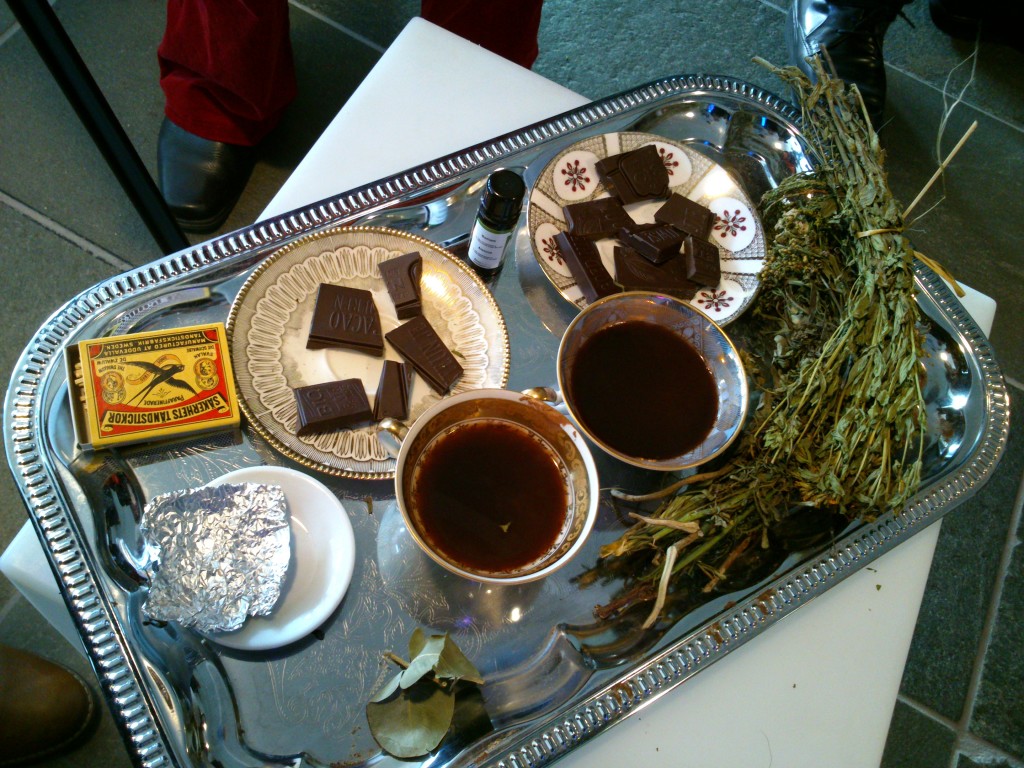
The main challenge was to get the Sensiks and Silent Suit systems working together and to time the events to the users’ heart-rate. We didn’t even have time to test the final scenario.
One of the jury members agreed to be the guinea-pig. And even though we didn’t manage to manipulate the heart-rate feedback we could hear her heart-beat slowing down as she progressed through the experience. Later she described that she could turn inwards and let go of the world outside the cabin. This was exactly what we were aiming for.
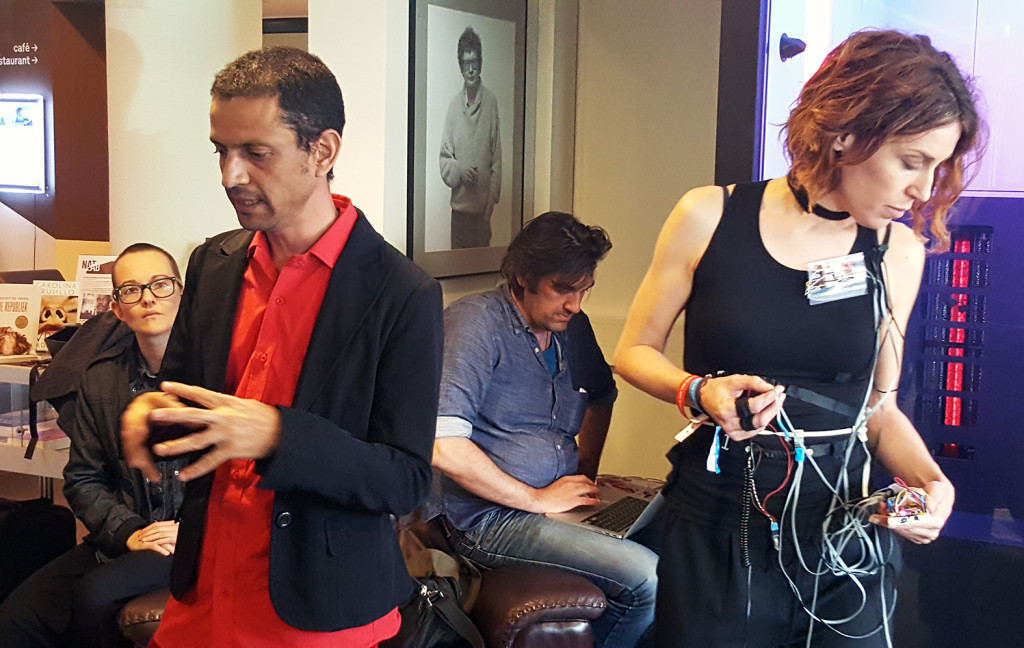
Some conclusions
For me the “260 beats womb reset” experience was a proof of concept. That you can actually change a state of mind through relatively simple means (light, sound, smell and airflow) using physiological data as input. An interesting insight is that it is important to make the experience bigger than the box. To create a larger ritual that is not isolated from the rest of the environment. The user must be lured and triggered to actually use the cabin, it must make sense in the context of life.
It was a great inspiration to work with Branly, David, Masha, Michel, Fred (the inventor of the Sensiks) and all the other participants. Michel did a great job of getting everything to work in time for the presentation and combining the systems. We’ve been able to create a spiritual experience using technology. It will be worthwhile exploring this further. I feel a step closer to realizing my Hermitage 3.0.
Edit >> In addition to this report there is an interview with me by Olga Mink from Baltan Laboratories all about the hackathon. Included there is a very nice video impression of the whole week.